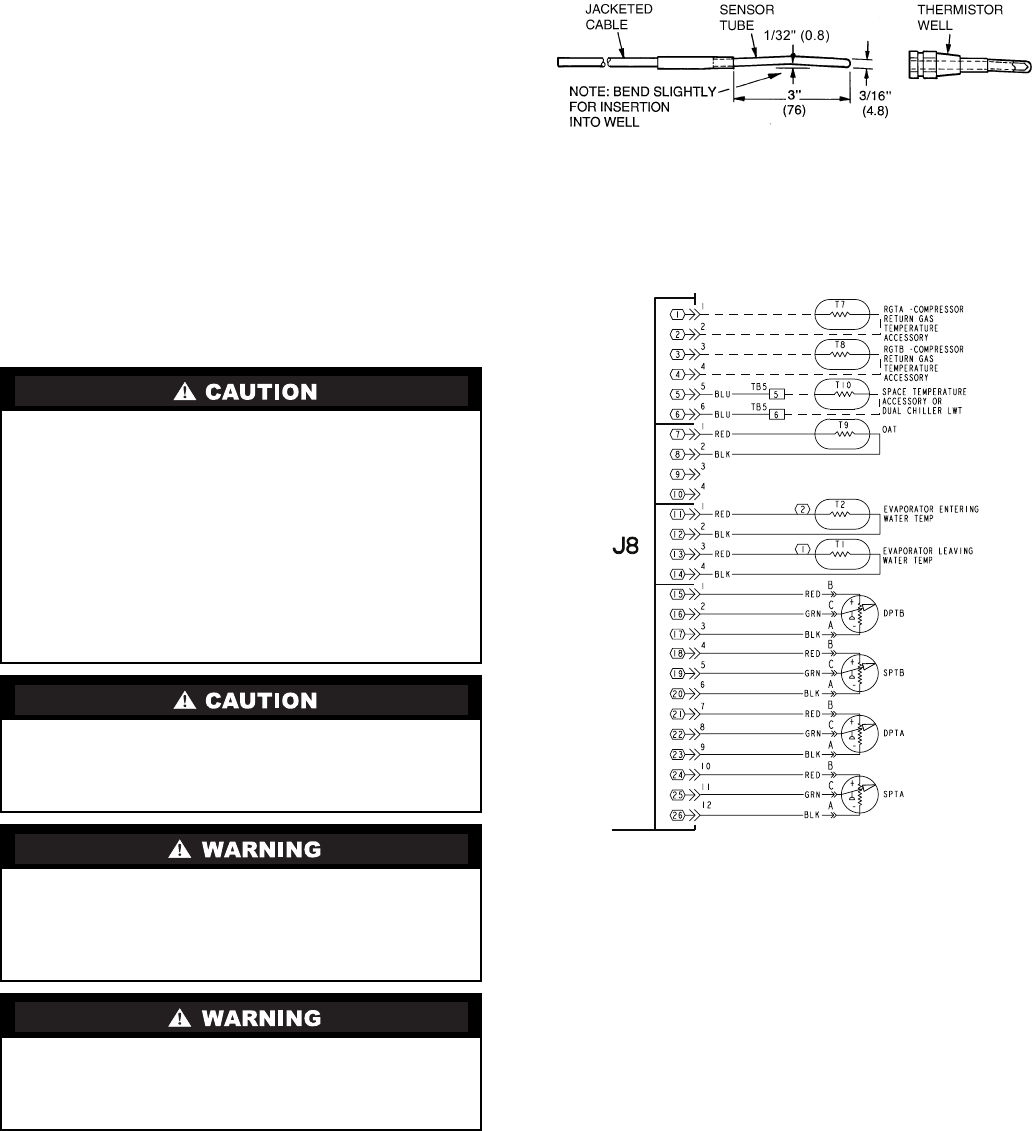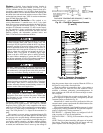
68
Strainer —
Periodic factory-installed strainer cleaning is
required. Pressure drop across strainer in excess of 3 psi
(21 kPa) indicates the need for cleaning. Normal (clean) pres-
sure drop is approximately 1 psi (6.9 kPa). Open the factory-
installed blowdown valve to clean the strainer. If required, shut
the chiller down and remove the strainer screen to clean. When
strainer has been cleaned, enter ‘YES’ for strainer maintenance
done (S.T.MN) [Run Status, PM].
Motormaster® V Controller —
The optional or ac-
cessory Motormaster V controller uses a 0 to 5 vdc signal
input from a pressure transducer attached to the liquid line ser-
vice valve gage port on each circuit. See Fig. 37. The pressure
transducer is connected to terminals 2, 5 and 6 on the control-
ler. The controller is factory configured and requires no field
programming. If a situation arises where the drive does not
function properly, the information provided below and
Table 37 can be used to troubleshoot the drive.
GENERAL OPERATION — This control varies condenser
fan speed based on liquid pressure. The control is a Variable
Frequency Drive (VFD) and is only compatible with motors
rated for use with VFDs. The accompanying pressure transduc-
er has a 0 to 5 v output range corresponding to a –40 to 460 psi
range. The VFD provides a 5 v output for the transducer on
pin 6.
This system is a reverse acting, proportional-integral (PI)
control. The VFD will vary the motor speed to drive the liquid
line pressure to the set point during ambient temperatures be-
low 60 F. The set point is lower than a normal operating pres-
sure during summer operation. At higher ambient tempera-
tures, the fan will go to full speed (60 Hz or 50 Hz depending
on model) and remain there since it can not go fast enough to
bring the pressure down to the set point. When the VFD is at
full speed, it acts just like a fixed speed fan.
When the ambient air temperature drops, a fan running at
full speed draws too much air across the condenser coil to
maintain a minimum condensing pressure/temperature. In
these conditions, the VFD will slow down and begin to main-
tain a set point.
The VFD will display the set point as the default. The set
point is displayed in speed as Hz and is configured by the start
command jumper as detailed in Fig. 38.
Motormaster V control can also be configured to follow an
external control system to perform the PI control functions. See
configuration section for details.
The real-time feedback signal (liquid line pressure, in volts)
is displayed by viewing parameter 69. The real-time output fre-
quency is displayed by viewing parameter 71.
SET POINTS — Operating modes are configured for R-22
with a set point of 135 psig on the liquid line.
INSTALLATION — See Fig. 38 for transducer wiring to the
VFD.
NOTE: The drive is phase insensitive with respect to incoming
line voltage. This means that the VFD will operate with any
phase sequence of the incoming three-phase voltage.
If input power has not been applied to the drive for a period
of time exceeding three years (due to storage, etc.), the
electrolytic DC bus capacitors within the drive can change
internally, resulting in excessive leakage current. This can
result in premature failure of the capacitors if the drive is
operated after such a long period of inactivity or storage. In
order to reform the capacitors and prepare the drive for
operation after a long period of inactivity, apply input
power to the drive for 8 hours prior to actually operating
the motor. Before attempting to operate the drive, motor,
and driven equipment, be sure all procedures pertaining to
installation and wiring have been properly followed.
DO NOT connect incoming AC power to output terminals
T1, T2, and T3! Severe damage to the drive will result. Do
not continuously cycle input power to the drive more than
once every two minutes. Damage to the drive will result.
Hazard of electrical shock! Wait three minutes after discon-
necting incoming power before servicing drive. Capacitors
retain charge after power is removed. Drive assembly
includes externally mounted current limiting resistors. Use
extreme caution when servicing the drive.
When configured as shown below, this equipment is
designed to start when it receives line power. Ensure that
all personnel are clear of fans and guards are installed
before applying power.
FLUID-SIDE TEMPERATURE SENSORS (T1 AND T2)
NOTE: Dimensions in ( ) are in millimeters.
Fig. 35 — Fluid-Side Temperature Sensors
(T1 and T2)
Fig. 36 — Thermistor Connections to
Main Base Board, J8 Connector


















